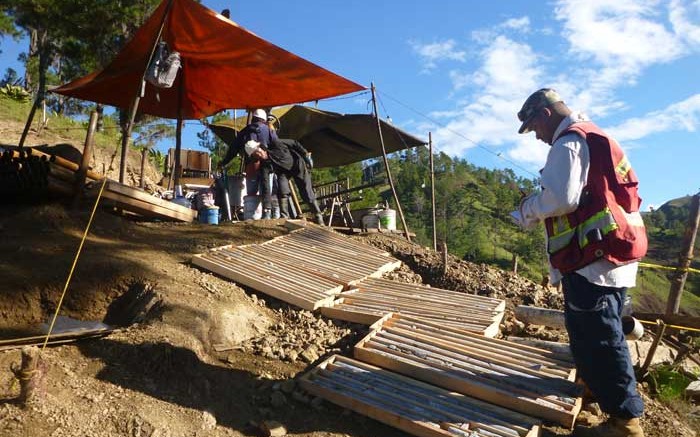GoldQuest Mining (TSXV: GQC; US-OTC: GDQMF) has tabled a positive preliminary economic assessment (PEA) for its flagship project, consisting of the Romero and Romero South gold–copper deposits, two years after discovering the main deposit in the Dominican Republic.
“We consider the PEA a good start, showing huge uplift in value to GoldQuest for our discoveries of both Romeros,” Bill Fisher, the company’s executive chairman, said in an email.
Prepared by Micon International, the study envisions a 3,800-tonne-per-day underground mine producing 90,000 oz. gold and 15.6 million lb. copper annually for 15 years.
Life-of-mine cash costs would be US$153 per oz. gold — net of copper by-product credits of US$557 per oz. — with all-in sustaining costs of US$353 per oz. gold.
But the low operating costs have higher start-up costs.
The study estimates capital expenditures of US$333.5 million, excluding US$40.4 million in life-of-mine sustaining costs.
The higher costs would come from the mining method, with the company using mechanized longhole stoping, with ramp and shaft access. Most of the capex would go towards sinking a shaft, installing a primary crusher underground and making provisions for backfill during pre-production.
“The issue here is that the superior operating costs achieved by developing the mining method are best served by getting to the bottom of the mine, and backfilling ‘bottom-up,’” Fisher says. “Once done, the sustaining capital is low — US$40 million over 15 years — as all the capital is already deployed.”
Nevertheless, the project’s economics are promising. Romero has an after-tax net present value of US$274 million, using a 5% discount rate, and a 15.1% after-tax internal rate of return, based on US$1,300 per oz. gold and US$3.25 per lb. copper.
Fisher points out the “best way” to improve the economics are to uncover other deposits in the largely unexplored district and spread the upfront cost per ounce to lower the “capital intensity.”
On that end, the company has started a 10,000-metre drill program on the Tireo project, a 50 km long land package that includes the Romero and Romero South deposits.
GoldQuest is also evaluating ways to optimize the mine plan. This includes potentially adjusting the mining sequence and exploiting the smaller, higher-grade Romero South deposit before the Romero deposit, while reducing the daily throughout to lower initial costs, Fisher says.
The mine plan envisions mining the Romero deposit first and putting the Romero South deposit into production in year 14. The smaller deposit, discovered in 2006, could be mined with modified room-and-pillar mining and backfill, the company says.
The PEA assumes GoldQuest would process 80% of the deposits’ indicated resources and 20% of the inferred resources.
The project contains 19.4 million indicated tonnes grading 2.63 grams gold, 0.63% copper, 0.29% zinc and 3.7 grams silver per tonne for 1.65 million gold oz., or 2.4 million equivalent oz. gold. It has another 10 million inferred tonnes averaging 1.64 grams gold, 0.36% copper, 0.42% zinc and 3.8 grams silver for 529,000 oz. silver, or 790,000 equivalent oz. gold.
Haywood Securities analysts Mick Carew and Kerry Smith write Romero has “low-cost production,” but caution that “the initial capital cost is too high for a junior to finance in the current environment, and GoldQuest would need a partner to fund the development of Romero.”
Fisher contends the company is “well-positioned” to fully permit the project and move it to a production decision. He adds that GoldQuest will decide whether it needs a joint-venture partner during the feasibility study, depending on the market conditions.
The company also benefits from previously running GlobeStar, a base metals producer in the Dominican Republic, which turned the greenfield Cerro de Maimon copper–gold project into a mine. Australian firm Perilya bought GlobeStar for $184 million in 2010.
“With our local history and active engagement with local communities, and relationships with the government, we are perhaps as well able to get this project to a full production decision in the Dominican Republic as anyone,” Fisher says.
On the PEA results, GoldQuest slipped a cent to close May 27 at 29¢. It has a $42.7-million market capitalization and $10 million in its treasury.


Be the first to comment on "GoldQuest’s PEA on Romero a ‘good start’"